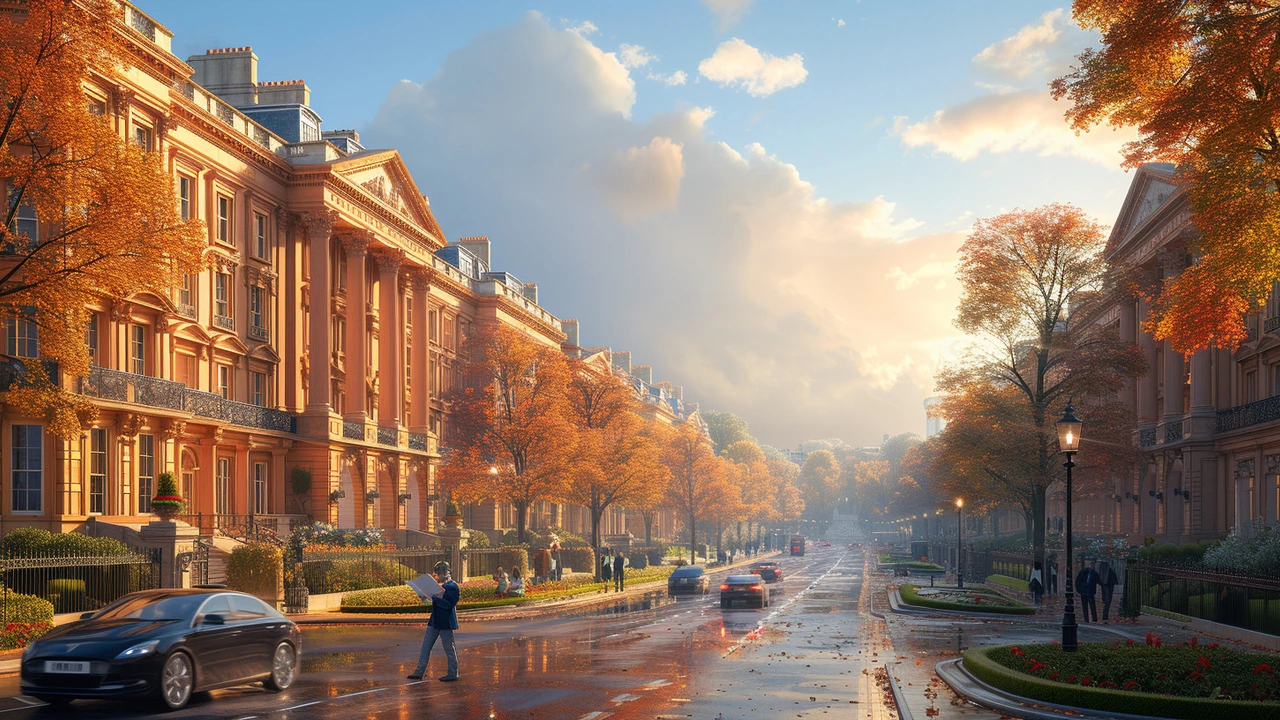Exploring Georgian Architecture's Impact on Urban Landscape Design
 Feb, 3 2024
Feb, 3 2024
Introduction to Georgian Architecture
Strolling through the streets lined with Georgian buildings, one can't help but be captivated by the elegance and symmetry that define this architectural style. Originating in the 18th century during the reigns of the first four British monarchs of the House of Hanover, Georgian architecture has left an indelible mark on cities across the globe. Its influence spans continents, from the cobblestone streets of London to the historical districts of American cities, and even down to the charming avenues of Melbourne where I reside.
In its essence, Georgian architecture is celebrated for its emphasis on proportion, balance, and simplicity. The style is characterized by rigid symmetry in building facades, large sash windows evenly spaced across the exterior, and exquisite brickwork. Decorative elements, while understated, are meticulously crafted, showcasing the craftsmanship of the era. Interiors follow a similar principle of symmetry and restraint, with spacious rooms designed to embody elegance and grace.
The Influence of Georgian Architecture on Urban Landscaping
The introduction of Georgian architecture into urban environments has had a profound effect on city planning and landscape design. Unlike the chaotic and densely packed cities of the medieval period, Georgian urban developments were characterized by orderly streetscapes and public squares. These open spaces were not only aesthetically pleasing but also served practical purposes, enhancing air quality and providing areas for social interaction and public gathering.
One of the most significant contributions of Georgian architecture to urban landscapes is the concept of the 'terrace' or 'row-house'. This residential design allowed for efficient use of space within expanding cities, without sacrificing the aesthetic appeal. The terraced houses, with their uniform facades and aligned windows, created a harmonious streetscape that exuded both elegance and community. This architectural solution has since been adapted in various forms around the world, proving its versatility and enduring appeal.
Adapting Georgian Principles in Contemporary Urban Design
Today, the principles of Georgian architecture continue to influence modern urban design, albeit in a more nuanced manner. City planners and architects often draw upon the Georgian emphasis on harmony and proportion when developing new urban areas or revitalizing old ones. The idea of creating cohesive and balanced environments remains central to contemporary city planning.
Moreover, the Georgian architectural legacy has inspired the integration of green spaces into urban settings. Just as Georgian squares provided residents with much-needed open areas, modern cities are increasingly incorporating parks, green belts, and tree-lined boulevards into their layouts. These elements not only improve the aesthetic quality of urban areas but also contribute to environmental sustainability and the well-being of city inhabitants.
Preserving Georgian Architecture in Modern Cities
The task of preserving Georgian buildings and streetscapes in the face of urban development and modernization is a challenging yet essential endeavor. Conservation efforts are crucial to maintaining the historical and cultural identity of cities. Preserving Georgian architecture involves more than just maintaining the physical structures; it's about retaining the character and essence of urban spaces shaped by this style.
Local governments and preservation societies around the world have undertaken various strategies to protect Georgian heritage. These include designating historical districts, implementing strict building codes, and providing incentives for the restoration of Georgian properties. Through these measures, Georgian architecture remains a vital and visible part of the urban tapestry, enriching the lives of city dwellers with its timeless beauty and elegance.